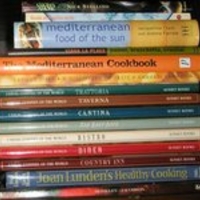
Ton Derks
My main field of interest are the northwestern provinces of the Roman empire. Since I was trained in classics as well as archaeology, I have always had a strong interest in Latin epigraphy. In most of my work, I try to combine archaeological, historical as well as epigraphic evidence.
My doctoral dissertation was about religious change in Roman Gaul, a topic that continues to have my interest. More recently, however, my work has widened to include other areas of identity construction, particularly those generated by the Roman army. I have been working on seal-boxes and the latinization of the Lower Rhine frontier area, on constructs of ethnic identity in inscriptions of Batavian and other auxiliary soldiers, and on combs and bodily appearance of Roman army soldiers.
Currently, I am co-editing a volume on Roman villa-landscapes in the north (with N. Roymans). For the near future, I hope to get back to a long-term project on rituals of the life course in Rome and the northwestern provinces.
Since 2001 I have been serving on the editorial board of Archaeological Dialogues, with great pleasure.
Phone: +31 20 598 6438
Address: VU University
Fac. of Arts
De Boelelaan 1105
NL - 1081 HV Amsterdam
My doctoral dissertation was about religious change in Roman Gaul, a topic that continues to have my interest. More recently, however, my work has widened to include other areas of identity construction, particularly those generated by the Roman army. I have been working on seal-boxes and the latinization of the Lower Rhine frontier area, on constructs of ethnic identity in inscriptions of Batavian and other auxiliary soldiers, and on combs and bodily appearance of Roman army soldiers.
Currently, I am co-editing a volume on Roman villa-landscapes in the north (with N. Roymans). For the near future, I hope to get back to a long-term project on rituals of the life course in Rome and the northwestern provinces.
Since 2001 I have been serving on the editorial board of Archaeological Dialogues, with great pleasure.
Phone: +31 20 598 6438
Address: VU University
Fac. of Arts
De Boelelaan 1105
NL - 1081 HV Amsterdam
less
Related Authors
Lovisa Brännstedt
Lund University
Jessica Suess
University of Oxford
Lechosław Olszewski
Independent Researcher
Roslynne Bell
The University of Manchester
Miroslav Glavičić
University of Zadar
Sarah Davies
Whitman College
Dimitris Mantzilas
University of the Peloponnese
InterestsView All (16)









Uploads
Books by Ton Derks
The first part of the paper investigates what role was played by religion in the legitimization of imperial power in Rome, and how this was articulated in material forms. It will be argued that in the age of transition between republic and empire the first emperor deliberately presented his military achievements as gifts from the gods and expressly associated himself with the world of the divine without actually claiming a divine status for himself. Statues of gods and men, and of altars and sacrifices were used as powerful tangible media to bring across the message of the divine foundation of the new political order.
The second part discusses the question as to how far the religions of subject territories were affected by the incorporation into the empire, and how these transformations become manifest in the material culture of cults in Italy and the provinces. Whilst there is compelling evidence for instructions from the imperial capital for the introduction of the imperial cult in the provinces, it is argued here that a crucial role was played by the provincial nobility, who translated the imperial ideology to the local context. At the local level, new cults, festivals and rites were introduced, but each community also kept part of its traditional religion. With conquest, the status, identity and hierarchical position of the old gods changed and new rites were created which did not exist before, neither in Rome nor in the provinces.
Edited volumes by Ton Derks
Papers by Ton Derks
The first part of the paper investigates what role was played by religion in the legitimization of imperial power in Rome, and how this was articulated in material forms. It will be argued that in the age of transition between republic and empire the first emperor deliberately presented his military achievements as gifts from the gods and expressly associated himself with the world of the divine without actually claiming a divine status for himself. Statues of gods and men, and of altars and sacrifices were used as powerful tangible media to bring across the message of the divine foundation of the new political order.
The second part discusses the question as to how far the religions of subject territories were affected by the incorporation into the empire, and how these transformations become manifest in the material culture of cults in Italy and the provinces. Whilst there is compelling evidence for instructions from the imperial capital for the introduction of the imperial cult in the provinces, it is argued here that a crucial role was played by the provincial nobility, who translated the imperial ideology to the local context. At the local level, new cults, festivals and rites were introduced, but each community also kept part of its traditional religion. With conquest, the status, identity and hierarchical position of the old gods changed and new rites were created which did not exist before, neither in Rome nor in the provinces.
Coloniae, civitates foederatae, ager: culti e santuari nel Piceno meridionale tra romanizzazione e municipalizzazione, Filippo Demma and Tommaso Casci Ceccacci
Cult places during the Roman conquest of Eastern Iberia (3rdc. BC-1stc. AD). Transformations of ritual practices and sacred landscapes, Ignacio Grau Mira
Romans at Greek sanctuaries: a view from the Aegean, Annelies Cazemier
De-Romanizing religious developments in the Roman West, Ralph Haussler
The impact of empire on cult places and ritual practices in Roman Gaul and Germany, Ton Derks
Mithraism and Religious Change: A View from Apulum Mithraeum III, Matt McCarty, Mariana Egri, Aurel Rustoiu
The 28 graves are described on the basis of old photographs and field drawings and are considered to be the remains of an early medieval cemtery dated between the seventh and the ninth century.